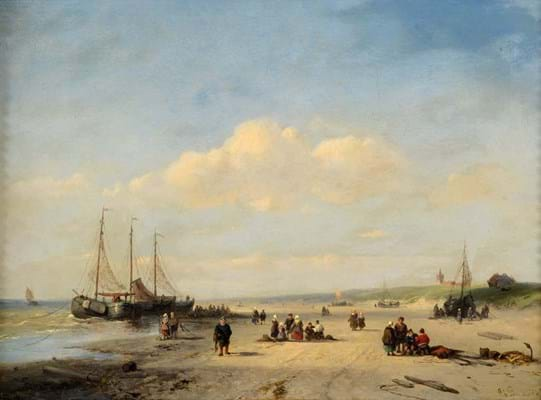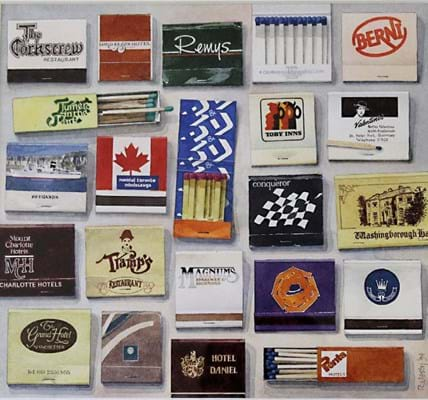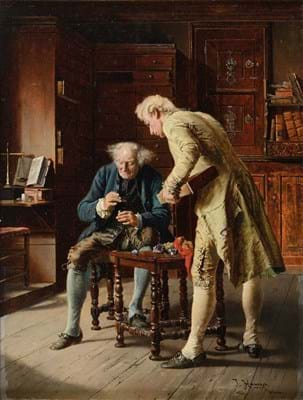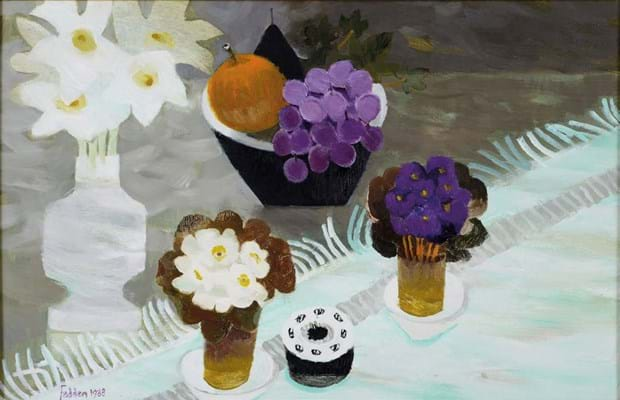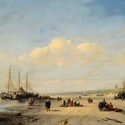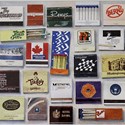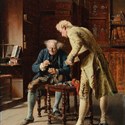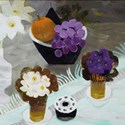Art market
“THE default setting for vendors is to believe that no one has got any money in January.”
Each year Richard Kay, Lawrences’ (22% buyer’s premium) of Crewkerne director and picture specialist, spends time “gently persuading” consignors that the January blues rarely apply to this industry.
“People will buy what they want even if they can’t afford it, especially dealers who are not going to pass up the opportunity to buy a picture in the sale they know they can make a profit on.”
Lawrences’ January catalogues are among the first to hit doormats in the New Year, which Kay says puts the auction house at an advantage.
“Collectors and dealers are desperate for something to do. The trade especially has had virtually nothing to get their teeth into for nearly a month and they are also wanting to get the year off on a good foot.”
As a result, Lawrences’ January sale attracts some of the busiest viewings of the year and is among the saleroom’s most consistent auctions.
The latest offering proved no different and was fortified by a good selection of private consignments that were fresh to the market and realistically priced. Held on January 20, it took over four hours to disperse the 280-lot auction, with 85% getting away to total £260,000 – up on last year’s sale by some margin.
Among the highlights was a strong price for a sunny Dutch beach scene by Charles Leickert (1818-1907), a Belgian artist better known for his winter landscapes. The signed 10 x 14in (25.5 x 35cm) oil on panel had come from a private collection of Austrian and northern European paintings on the Channel Islands that had been bought from the London trade in the late 1970s or early ’80s. A Dutch buyer secured it at £9000, six times the top estimate.
Despite his surprise at the punchy price, Kay said the work had a “crispness and a sparkle to it”. Being on panel rather than canvas was a plus for collectors as it allowed the artist to achieve a smoother finish and neater surface detail, said Kay. Though the panel needed a light clean, it was also devoid of condition issues such as craquelure, which can considerably affect the price of a Leickert.
The same collection also yielded a high sum for a cabinet picture of two men studying minerals by Johann Hamza (1850-1927), a German- Austrian artist keenly collected on the continent.
Noted for its condition, quality and exceptional attention to detail (even dust can be seen on the stretchers of the table to the centre), the small 9 x 7in (23.5 x 18cm) oil on panel sold to a French buyer for £8200 against a £1500-2000 estimate.
Topping the sale was a still-life by the prolific and popular painter Mary Fedden (1915-2012). The signed 18 x 2ft 4in (46.5 x 72cm) oil on ply panel, Still life with Flowers, Fruit and a Cake, dates to 1988, a period when she produced some of her best pictures.
“Her work is very recognisable from the late ’80s. It has lost that hot orange colour that it had early on, the palette is more measured and her compositions are getting more distinctive,” said Kay.
It belonged to a 30-lot collection of Modern British works compiled in the late 1970s and ’80s by the vendor’s late father, and acquired for pleasure primarily from London auction houses and dealers in Mayfair and St James’s. In good condition and size, it attracted trade interest but ultimately sold to a local private collector for £10,500 against a £6000-9000 guide.
Another top price for a British artist came in the form of The Little Trawler, an 18 x 2ft 2in (45.5 x 66cm) marine watercolour by Charles Napier Hemy (1841-1917).
Exhibited at The Royal Academy in 1917, the work depicts a yacht cutting nimbly through the water on a bracing day in Falmouth.
Consigned from a vendor in Scotland, it sold on top estimate for £7000 to a private English buyer. Equally in demand but selling for more modest sums was material from the studio of skilful West Country landscape painter Ronald Jesty (1926-2016). Consigned by the executors of the artist’s estate, all 25 lots got away to 21 different local buyers, some of whom had never heard of the artist before the sale.
The collection totalled just shy of £8000, well beyond expectations, and sets a new high for Jesty’s prices. Born in Portland in 1926, Jesty trained to be a draughtsman and graphic designer and, for 30 years of life, produced neatly drawn and finely coloured designs for advertising and exhibitions.
He pursued painting in watercolour as a hobby but took it up full-time in 1978 at the age of 52, becoming a member of the Royal Society of British Artists and teaching part-time at the College of Art in Yeovil.
Not typical of his work but treasured by the artist was Matchbook Souvenirs, dated ’94. The 10 x 11in (26 x 28cm) watercolour featured around two dozen matchbooks and boxes painted in painstaking detail.
Estimated at £70-100, it proved a sale highlight, selling at £620.


